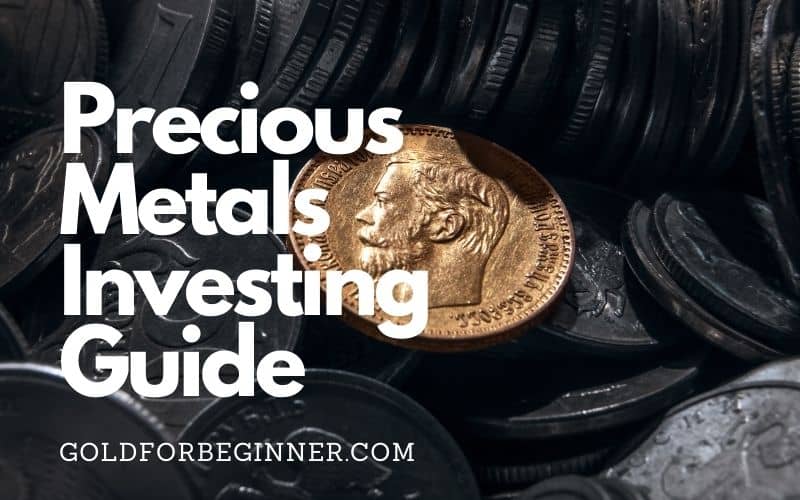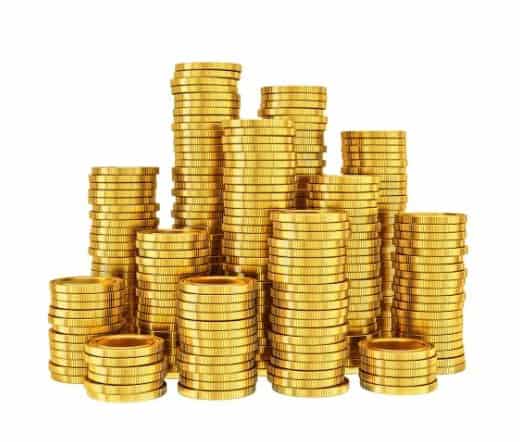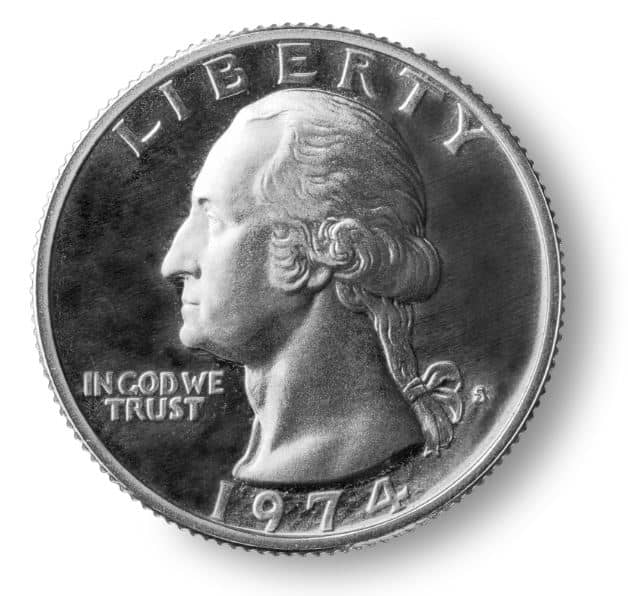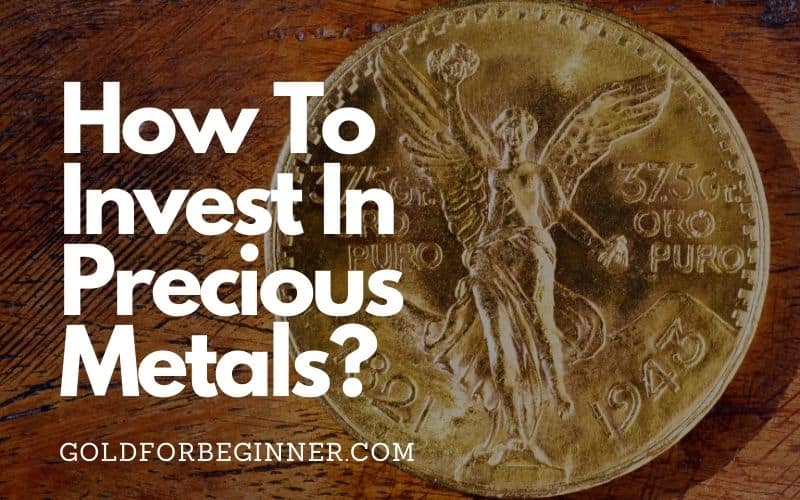Our association with gold and silver can be traced back beyond recorded history. The fascination and high regard we have for precious metals investing like gold are not hard to fathom. The adjective ‘Precious’ attached to metals is a dead giveaway. It means ‘of high worth or great value’.
A precious metal is a metal with high economic value for a variety of reasons. The high respect they command is due to their insatiable demand in the jewelry sector. This also gives them an undeniable edge as an asset. Their scarcity has only resulted in scaling up the interest in them and fueling their demand.
Gold and silver have occupied top spots among precious metals for thousands of years. Even in this modern age, when investors are deluged with a multitude of investment choices, our interest in these shiny metals is showing no signs of waning; in fact, it has only increased. The reasons are easily evident, only if we care to look for them.
Like gold and silver, platinum and palladium have also managed to garner the attention of investors in recent years, making them a cozy quartet. Close on their heels are other lesser-known precious metals like rhodium, iridium, ruthenium, indium, rhenium, and osmium. Electrum or ‘white gold’, a naturally mined alloy of gold and silver is also vying for its place in the sun.
If you are intrigued about investing in precious metals and would like to test the waters, read on to learn more about these lustrous metals, their potential as an investment vehicle, and what the future holds for them.

What are the 5 top precious metals?
Precious metals make a good investment choice due to their ever-expanding demand in jewelry, electronics, medical field, and industries. An argument in favor of precious metals investing is that their worth will never be zero. They will always command their intrinsic value.
The top 5 precious metals based on their demand and investment potential are gold, silver, platinum, palladium, and rhodium. Their prices are determined in the commodity markets where they are traded in bulk quantities. Each one of them comes with its unique opportunities and risks.
Let us take a look at them in more detail.
1. Gold
The yellow metal has always held the prime position among precious metals. Gold has an edge over other metals due to its unique attributes – durability, ductility, malleability, and conductivity.
Beyond its use in jewelry and artifacts, gold finds application in dentistry, medicines, GPS devices, mobile phones, and television sets among others. Central Banks stockpile gold as an instrument to underpin the value of their currencies. Individual investor’s interest in gold is just an extension of this trend.
The gold price is dictated by the bullion market where it is traded in bulk. Known as the spot price, the gold rate is quoted per ounce of gold and changes round the clock based on many factors. Unlike other commodities, supply and demand are only two of the factors affecting its value.

One of the driving determinants of gold rates is investor sentiment, which is hard to predict. Moreover, whether there is less money in the market or it is flushed with it, gold is always the go-to investment option for many investors for various reasons.
Some of the reasons for an increase in interest in the yellow metal are:
- Economic uncertainties such as inflation, currency depreciation, devaluation of the currency, and similar economic concerns result in negative returns from other financial assets like stock, bonds, and real estate. Gold acts as a hedge to retain the value of savings.
- Financial crises including the collapse of the banking system, weakening of currencies, and such like make investors flock to gold as an asset.
- Political instability caused by wars, the ineptitude/failure of governments, faulty policies leading to large-scale unemployment, etc, trigger many investors to prefer gold as a safe haven.
2. Silver
While gold prices are primarily dictated by investors’ sentiments and their perception as an asset, the silver rate is guided only in part by its ability to retain its worth at times of value erosion of currencies. Its use in various industries acts as an equal driver of silver rates.
Similar to gold, silver is also hoarded for its attribute as a store of value and as a hedge against the negative trends in the financial world. However, industrial uses of silver are large enough to influence its price.
As its industrial applications are vast and varied and driven by multiple factors, the price of silver is more volatile than that of gold. As more and more applications are developed for silver, its stature as a precious metal is growing steadily.
Some of the industrial applications that have managed to sway the silver prices are:

- Silver occupied a predominant position in the photography industry – silver was an integral component in the photographic film. However, with the advent of digital photography, the large-scale requirement for silver vanished. This had a devastating effect on its price.
- As many Asian economies flourished in the last few decades leading to an increase in disposable income among its citizens, demand for electrical and electronic appliances, medical products, and other industrial goods exploded. This has led to the increased application for silver in industries, riding up its prices.
- The growth of the information technology sector has led to the skyrocketing demand for silver in the field. It has uses in semiconductors, microcircuits, and batteries among others. This has had an immense influence on its prices.
Despite its growing application in industries, it is not yet clear how much this is influencing its utility as an investment vehicle. Whether the increased industrial uses of silver have a direct impact on its status as a store of value or not, silver prices are definitely swayed by this.
3. Platinum
Platinum, the third precious metal among the quartet, is also traded in the international commodities market 24×7. Often platinum commands a higher price than gold as it is much rarer. The amount of platinum exacted from the earth is far less than that of gold in a year.
Unlike gold and similar to silver, the price of platinum is affected by multiple factors and not just by its use as an asset. Its applications in diverse fields make the price of platinum more volatile than that of gold. Investors should understand this aspect of the metal before going for it.
Some of the factors influencing platinum rates are:
- Platinum has significant applications in industries like silver – large enough to affect its prices. The recent push for containing greenhouse gas emissions has pushed up its use in the automobile sector. It is used in automobile catalysts to bring down the toxic nature of emissions.
- The substantial use of platinum in the automotive industry and its heavy reliance on it for reducing the toxicity of fuel emissions is a major driver of the platinum prices. Again, this depends to a large extent on the production and sales of motor vehicles.
- The use of platinum in the automobile industry also depends on the governmental policy on containing emission levels and strict implementation of the same. Due to its expensive nature, automakers are resorting to recycling catalytic converters or using its less expensive substitute palladium, platinum’s poorer cousin.
- Like gold, a substantial market for platinum is from the jewelry sector. Platinum also finds utility in various medicines to treat cancers, medical equipment, and dental prostheses.
- In addition to the auto industry, platinum is used widely in refining catalysts during petroleum and chemical refining. It is also used in the manufacture of electronic devices including computers.
- Its chemical inertness at very high temperatures makes it ideal for a variety of uses – as an alloying agent, in electrodes, non-corrosive laboratory containers, and electrical devices and circuits.
4. Palladium
Least known among the quartet of precious metals, palladium is from the same group of metals as platinum and bears a strong resemblance to it. The shiny, silver-white metal is considered the poorer cousin of platinum and hence used to replace it in many fields.
The most significant use of palladium is in catalytic converters as it serves as an excellent catalyst for chemical processes. The metal’s great malleability, durability, and strength make it an ideal component in solar panels and fuel cells.
Palladium finds extensive use in electronic devices and industries. It is also used in jewelry, medicines, dentistry, treatment of groundwater, and chemical applications. When combined with gold, the resultant alloy is stronger than white gold. This has led to its limited use in jewelry and coins.
This precious metal is mostly mined in the United States, Canada, Russia, and South Africa.
5. Rhodium
Rhodium is another silver-white metal from the same stable as platinum. Classified as a noble metal, rhodium follows the similar chemical characteristics of the platinum group of metal – non-corrosive, non-oxidative, resistant to wear and tear, shiny, non-toxic, excellent catalyst, and has a low density and high melting point. One of its properties that helps in its industrial use is its inactive nature even at very high temperatures.
The main use of rhodium is in catalytic converters used in automobiles to reduce toxic levels in emissions. Its shiny appearance and inert property are helpful in its use as a finish in jewelry, mirrors, and searchlights. Its alloy with platinum finds application in aircraft turbine engines. It is widely used as a catalyst in the chemical industry. Its resistance to corrosion and low electrical resistance makes it a suitable component in electrical devices.
Rhodium is the rarest of all the six metals in the platinum group of metals – rarer than gold and silver. South Africa is the major producer of Rhodium. The metal is also found in the river sands in North and South America.
Due to its rarity, limited supply, and a wide range of applications, the price of rhodium is very volatile in the global commodities market.
What metals are worth investing in?
This is a question only you can answer. The truth is, nobody can tell you which is the right metal for you to invest in. It is up to you to weigh the pros and cons of each one of them and make the decision.
As a beginner investor in precious metals, this is one of the toughest decisions to make. Each metal comes with its unique characteristics, applications, and sources, creating a unique market and investment profile.
However, one thing is for sure. Adding a precious metal to your investment portfolio is a good step forward in diversification and bringing balance by reducing its risk profile and volatility.
If you are just starting, maybe gold and silver are the most suitable precious metals for you. Those two are the ideal ones to start with because their supply and applications are more established and clearer than those of others.
The rest of the precious metals are mostly in their nascent stage, with newer applications and sources being discovered with each passing day. This can make their prices more volatile than that of gold and silver.
Once you get used to having a precious metal in your portfolio, you may take the next step of investing in the lesser-known precious metals.
Is it better to invest in gold or silver?
While both gold and silver have immense investment potential due to their unique attributes, it is a better choice to invest in gold among the two for beginner investors. The case is true for moderately experienced investors as well. The reason for this is simple enough.
The investment sketch for gold is more or less established and stable with its array of definitive uses, sources, and fields of application. This directly converts to more consistency and less volatility in its price. In other words, the risk involved in investing in gold is minimal – less than that for silver.
Silver, on the other hand, has a bulk of its application in industries. This is directly linked to economic activity, which in turn is influenced by various factors including political uncertainties and policy changes. These make silver prices more volatile and riskier for a less experienced investor.
Moreover, our historical association with gold and its utility as a store of value makes it a highly desirable choice for investment. And, this same feature of gold makes it one of the most liquid of all financial assets. However, the same cannot be said for silver.

How to invest in precious metals?
There are two ways to buy precious metals:
- Directly, by buying metals in the physical form
- Indirectly, by purchasing financial products such as commodity ETFs, stocks of mining and refining companies, bonds, and futures contracts and options
Both methods of investment come with their pros and cons. Before you decide to buy physical gold or other precious metals, you should be aware of the need for safe storage and insurance. This will inevitably lead to extra expenditure.
In case you don’t want to deal with the additional hassle of storage, you may choose the indirect way to invest in them. Financial products do not involve actual ownership of precious metals and hence do not entail a need for storage.
Physical precious metals track their price in the real sense. This means your gain/loss is directly linked to their price in the commodity market. However, the commodity price is only one of the factors affecting the value of a financial product.
In other words, the stocks or ETFs you have may not bring you as much profit from the gains in the commodity price as the physical form of the precious metals will. On the plus side, the reverse is also true. The loss will be limited in the case of financial products when the price slides.
Commodity Exchange Traded Funds (ETFs)
ETF is an investment fund whose underlying asset can be stocks, bonds, or commodities. They are traded in stock exchanges. Commodity ETFs exist for gold, silver, and platinum. They offer convenience and liquidity but do not offer access to the physical precious metals. Even as the commodity ETFs track the price of the commodity, at no point you can expect actual delivery of the precious metal.
Mining stocks and mutual funds
Many precious metals mining and refining companies have their stock listed in stock exchanges. These stocks are leveraged to price fluctuations of the precious metals. Experience and expertise are requirements for profiting from this investment method. For a beginner, mutual funds offer a better alternative as they come with fund managers. Sticking to funds with a good track record is a safer way to play the field.
Futures and Options
Precious metals futures contracts and options are asset classes that allow investors to leverage the price of precious metals. You can use them to bet against future price fluctuations to earn a profit. These are best suited for experienced investors.
Bullion
Bullion products like bars and coins are made with the sole purpose of investment, though they differ in some aspects like the premium above the spot price of the precious metal. Safety and storage concern aside, investing in bullion coins and bars requires constant monitoring of the commodity market conditions.
Jewelry
Precious metals in the form of jewelry combine investment with pleasure. However, the high markup on jewelry makes them a poor choice purely from an investment perspective.
Certificate
These are essentially documents showing ownership of specific quantities of precious metals issued by banks. The actual metal is safely stored in bank vaults for which you need to pay. There are two types of precious metals certificates based on storage methods – segregated and non-segregated.
Are precious metals a good investment?
There are pros and cons to investing in precious metals like any other financial asset. It is up to each investor to decide whether the advantages outweigh the disadvantages.
The benefits of investing in precious metals are numerous:
- Portfolio diversification
- Reduced risk and volatility
- Safe bets due to their stability
- Hedge against inflation, currency depreciation, and devaluation
- Ever-expanding demand
- Always retain their intrinsic value
Even as all the above-mentioned points about precious metals are true, the fact remains that any type of investment carries its own risk. There is no such thing as a ‘100% safe’ investment. And, they are long term investment vehicles; not get quick rich choices.
Another significant downside of investing in precious metals is that it is a dormant investment that doesn’t earn you interest or dividends like others. The only way to make a profit is by selling them.
Warren Buffett, the famous American investor, puts these sentiments in a nutshell:
“The problem with commodities is that you are betting on what someone else would pay for them in six months. The commodity itself isn’t going to do anything for you….it is an entirely different game to buy a lump of something and hope that somebody else pays you more for that lump two years from now than it is to buy something that you expect to produce income for you over time.”
Bottom Line
Why should you invest in precious metals? The reasons are plenty. Of course, there is always a percentage of risk associated with it. Then again, as the old saying goes – no pain, no gain.
The allure of precious metals is hard to resist for many investors while others feel too trepid to venture into this unfamiliar world. Whichever category of investors you are, expert advice on the topic involves two points.
Firstly, you should not allow the luster of the metal to dazzle you to invest more than you intended. It is never a good thing to put all your eggs in one basket.
